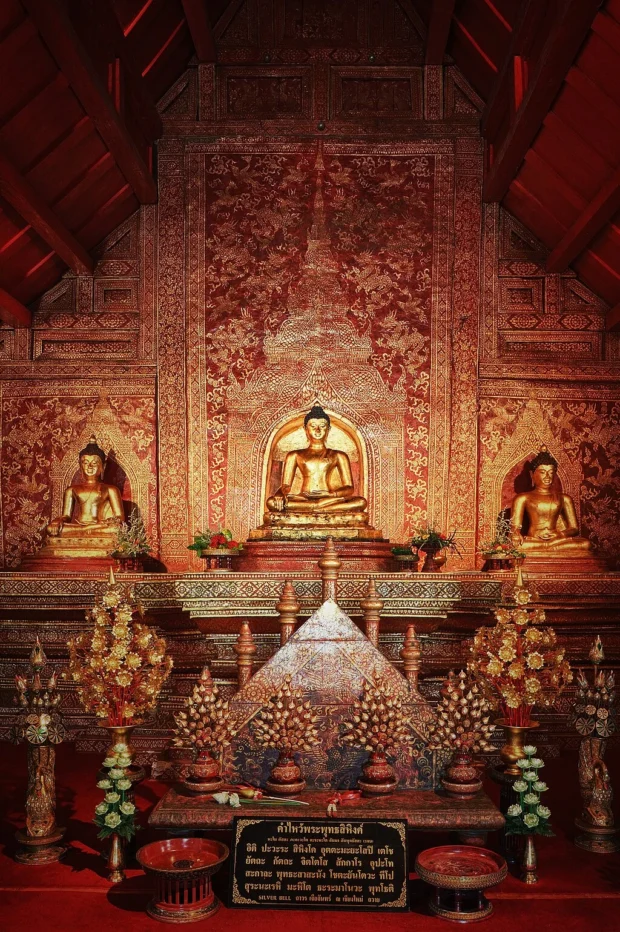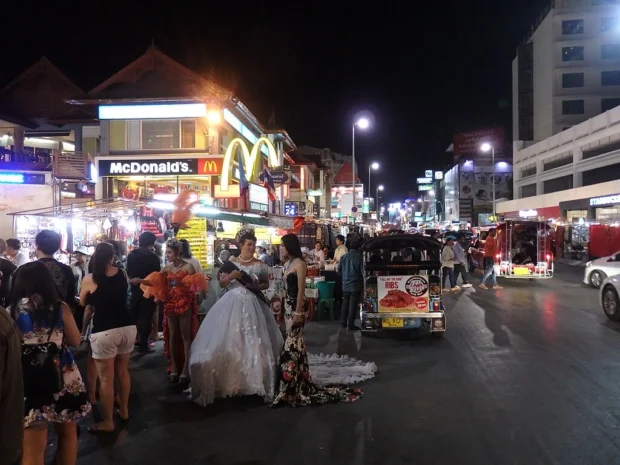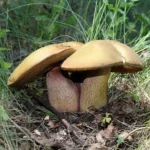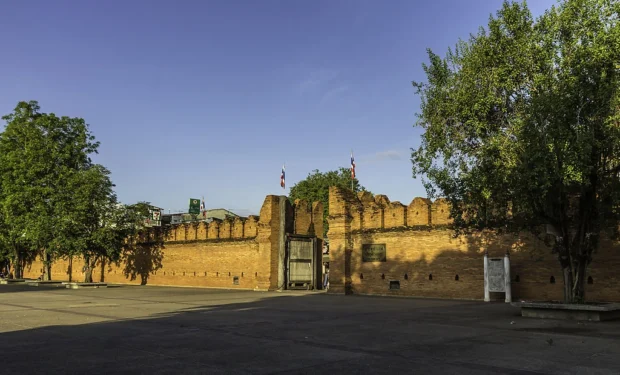Chiang Mai is a calm city in northern Thailand where history and nature come together softly. I spent days walking its old streets, breathing the air filled with flowers and stories. This city feels like a quiet conversation between past and present. If you want to see temples with golden roofs, taste food fresh from mountain farms, and move around easily without rush, Chiang Mai waits gently for you.
Table of Contents

Temples and Old Walls: Time in Chiang Mai
The heart of Chiang Mai is its old city, a square area surrounded by ancient walls and a moat. These walls were built more than 700 years ago when Chiang Mai was the capital of the Lanna Kingdom. Walking here feels like stepping back quietly in time. Wat Phra Singh and Wat Chedi Luang are two famous temples where monks chant and visitors bow respectfully. Wat Phra Singh is known for its beautiful Lai Kham chapel, where golden decorations shine under soft light. Wat Chedi Luang once held a huge Buddha statue, now only the structure remains, but its silence speaks volumes about centuries past.
For those who appreciate Chiang Mai’s peaceful charm, the coastal delights of Phuket Island and Phi Phi Islands offer a refreshing contrast with vibrant sea views and island adventures.
To complement your visit in northern Thailand, consider the peaceful grandeur of Wat Arun in Bangkok, a stunning temple offering serene riverside views and rich history.
After enjoying Chiang Mai’s calm temples and markets, take a look at Bangkok’s vibrant streets and temples for a lively contrast in Thai city life.

One secret that many visitors miss is the smaller temple, Wat Umong, hidden in the forest just outside the city. It has old tunnels and a peaceful atmosphere perfect for sitting quietly and breathing in the green scent of trees. The website of the Chiang Mai Tourism Association shares more about these sites if you want to learn before arriving.

Savoring Local Flavors in Old Town Markets
Food is a soft invitation in Chiang Mai. The narrow lanes near the temples overflow with fresh markets and simple restaurants. Each meal can be a chance to taste rice grown in nearby valleys and herbs gathered by local farmers. A bowl of Khao Soi, a creamy coconut curry noodle soup with crispy edges, is a must. Try this dish at cafés near the Sunday Walking Street; the vibe is lively yet relaxed.

Other delights include Sai Oua, a spicy sausage full of lemongrass and ginger, perfect to nibble while watching artisans at work. For sweet moments, mango sticky rice drizzled with coconut milk balances the day’s heat gently. Many locals gather at markets in the Nimmanhaemin area for night food, where you can sit with friends or strangers alike, enjoying flavors and stories.

Getting Around Without Fuss
Chiang Mai’s small size makes it easy to explore, even on foot or by bicycle, which many locals prefer to reduce pollution and keep the city calm. There are also red songthaews, shared trucks that follow fixed routes around the city and countryside. They offer quick, friendly rides where you pay a small fee upon arrival. From the airport, a public bus serves the city center regularly, making it accessible for those who wish to avoid busy roads.

Remember, when using any vehicle or walking, patience and smiles open doors better than rushing. In the local language, “Sabai Sabai” means to relax and take it easy. This attitude suits Chiang Mai perfectly.

Simple Customs and Gentle Respect
When meeting Thai people here, a slight bow with hands pressed together in a prayer shape is a warm way to say hello. They call this the “wai”. Speaking softly and avoiding loud voices shows respect. It is polite to remove shoes before entering temples or private homes. Avoid touching anyone’s head, as it is considered the most sacred part of the body.

The locals use kind phrases such as “Khop Khun” (thank you) and “Sawasdee” (hello or goodbye). When I tried these words, people smiled wider, welcoming me more fully. Language here is not only communication but a gentle bridge between hearts.

Staying Close to Nature and Community
Many visitors choose guesthouses or small inns inside or near the old city. These places often have simple designs with local crafts included in decor, connecting guests to the place’s story. Some go further, staying with families in villages surrounding Chiang Mai. Such stays support rural economies and help preserve traditional crafts like silver making and weaving. One evening, I shared a meal with a family who welcomed me like a friend, teaching me how to fold banana leaves for food wrapping – a small but meaningful craft.

Chiang Mai’s green hills and organic farms are not far either. Day trips to these spots invite quiet walks, bird watching, and seasonal fruit tasting. Respecting nature here feels natural, like a gentle conversation where everyone listens.
Quiet Moments Along the River and Markets
The Ping River runs softly past Chiang Mai, its calm flow almost meditative. Watching the sunset near the riverside, boats float slowly while families and friends gather for the evening. The nearby Warorot Market offers a lively contrast, full of fresh goods, flowers, and fabrics. It is where locals shop daily and visitors can see real life unfold without the buzz of tourist-focused shops.
If you arrive early morning, you can join monks as they receive alms, rice, and small offerings from people walking with quiet steps. This ritual, filled with humility and grace, is a reminder of the city’s gentle pace and caring spirit.
Words to Connect with Locals
Trying some simple Thai phrases helps open more than just doors. Saying “Sawasdee” (hello/goodbye), “Khop Khun” (thank you), or “Mai Pen Rai” (don’t worry/it’s okay) often brings smiles and softer tones. The word “Sabai Sabai” means to relax or feel comfortable, a perfect feeling to wish someone in this peaceful place. When I used these gently, I felt deeper connection, as if the city itself spoke back.

Minimalist traveler documenting slow journeys focused on mindfulness and sustainability.
- Chiang Mai – East gate of the city wall – 0001 by Stefan Fussan on Wikimedia Commons – cc by-sa 3.0
- Phra That Doi Suthep 01 by ผู้สร้างสรรค์ผลงาน/ส่งข้อมูลเก็บในคลังข้อมูลเสรีวิกิมีเดียคอมมอนส์ – เทวประภาส มากคล้าย on Wikimedia Commons – cc by 3.0
- Interior Viharn Lai Kam Phra Singh Temple 1 2012 by Panupong Roopyai on Wikimedia Commons – cc by-sa 3.0
- Chang Khlan, Mueang Chiang Mai District, Chiang Mai, Thailand – panoramio (18) by mohigan on Wikimedia Commons – cc by-sa 3.0
- Elephant – Chiang-Mai, Thailand (49418887446) by Nina R from Africa on Wikimedia Commons – cc by 2.0
- 1006 Doi Inthanon 1 by BerryJ on Wikimedia Commons – cc by-sa 4.0
- ยีราฟ สวนสัตว์เชียงใหม่ Giraffe in Chiang Mai Zoo (18) by กสิณธร ราชโอรส on Wikimedia Commons – cc by-sa 4.0
- ThaPaeWalkingStreet3 by LannaPhoto on Wikimedia Commons – cc by-sa 4.0
- 20171105 Wat Chedi Luang Chiang Mai 9897 DxO by Jakub Hałun on Wikimedia Commons – cc by-sa 4.0
- Chiang Mai – Wat Phra Singh – 0004 by Stefan Fussan on Wikimedia Commons – cc by-sa 3.0
- น้ำตกหนึ่งเหนียว ๑ – One sticky waterfall 1 by Random username 083794703875938 on Wikimedia Commons – cc0
